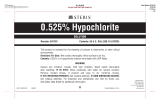Thermo Fisher Scientific Mapping Assay Owner's manual
- Type
- Owner's manual

For Research Use Only.
Not for use in diagnostic procedures.
701441 Rev. 2
GeneChip
Mapping Assay
Manual
®

Trademarks
Affymetrix®, GeneChip®,®,,
®, GenFlex®, MicroDB™, Jaguar™,
Flying Objective™, NetAffx™, CustomExpress™, CustomSeq™, HuSNP®, ‘Tools To Take You
As Far As Your Vision™’, and ‘The Way Ahead™’ are trademarks owned or used by
Affymetrix, Inc.
GeneArray® is a registered U.S. trademark of Agilent Technologies, Inc.
QIAGEN is a registered trademark of QIAGEN GmbH, Hilden Germany.
Limited License
FOR RESEARCH AND/OR ANALYTE SPECIFIC REAGENT USE ONLY:
EXCEPT AS EXPRESSLY SET FORTH HEREIN, NO RIGHT TO COPY, MODIFY,
DISTRIBUTE, MAKE DERIVATIVE WORKS OF, PUBLICLY DISPLAY, MAKE, HAVE
MADE, OFFER TO SELL, SELL, USE, OR IMPORT PROBE ARRAYS OR ANY OTHER
PRODUCT IS CONVEYED OR IMPLIED WITH THE PROBE ARRAYS, INSTRUMENTS,
SOFTWARE, REAGENTS, OR ANY OTHER ITEMS PROVIDED HEREUNDER. EXCEPT
FOR CERTAIN ARRAYS AND REAGENTS DESIGNATED AS "ANALYTE SPECIFIC
REAGENTS" (SEE APPLICABLE PACKAGE INSERT) WHICH ARE LICENSED FOR USE
AS ANALYTE SPECIFIC REAGENTS OR RESEARCH USE, ALL PRODUCTS
(INCLUDING THE PROBE ARRAYS, INSTRUMENTS, SOFTWARE, AND REAGENTS)
DELIVERED HEREUNDER ARE LICENSED TO BUYER FOR RESEARCH USE ONLY.
THIS LIMITED LICENSE PERMITS ONLY THE USE BY BUYER OF THE PARTICULAR
PRODUCT(S), IN ACCORDANCE WITH THE WRITTEN INSTRUCTIONS PROVIDED
THEREWITH, THAT BUYER PURCHASES FROM AFFYMETRIX (AFX) OR ITS
AUTHORIZED REPRESENTATIVE. THE PURCHASE OF ANY PRODUCT(S) DOES NOT
BY ITSELF CONVEY OR IMPLY THE RIGHT TO USE SUCH PRODUCT(S) IN
COMBINATION WITH ANY OTHER PRODUCT(S). IN PARTICULAR, (i) NO RIGHT TO
MAKE, HAVE MADE, OR DISTRIBUTE OTHER PROBE ARRAYS IS CONVEYED OR
IMPLIED BY THE PROBE ARRAYS, (ii) NO RIGHT TO MAKE, HAVE MADE, IMPORT,
DISTRIBUTE, OR USE PROBE ARRAYS IS CONVEYED OR IMPLIED BY THE
INSTRUMENTS OR SOFTWARE, AND (iii) NO RIGHT TO USE PROBE ARRAYS IN
COMBINATION WITH INSTRUMENTS OR SOFTWARE IS CONVEYED UNLESS ALL
COMPONENT PARTS HAVE BEEN PURCHASED FROM AFX OR ITS AUTHORIZED
REPRESENTATIVE. FURTHERMORE, PROBE ARRAYS DELIVERED HEREUNDER
ARE LICENSED FOR ONE (1) TIME USE ONLY AND MAY NOT BE REUSED. THE
PRODUCTS DO NOT HAVE FDA APPROVAL. NO PATENT LICENSE IS CONVEYED TO
BUYER TO USE, AND BUYER AGREES NOT TO USE, THE PRODUCTS IN ANY
SETTING REQUIRING FDA OR SIMILAR REGULATORY APPROVAL OR EXPLOIT
THE PRODUCTS IN ANY MANNER NOT EXPRESSLY AUTHORIZED IN WRITING BY
AFX IN ADVANCE.
Patents
Arrays: Products may be covered by one or more of the following patents and/or sold under
license from Oxford Gene Technology: U.S. Patent Nos. 5,445,934; 5,744,305; 6,261,776;
6,291,183; 5,700,637; 5,945,334; 6,346,413; 6,399,365; and 6,610,482; and EP 619 321;
373 203 and other U.S. or foreign patents.
Copyright
©2003-2004 Affymetrix, Inc. All rights reserved.

i
Introduction
This manual serves as a guide for technical personnel conducting
GeneChip® Mapping experiments in the laboratory. It contains
protocols for sample preparation, hybridization to arrays, and basic
information for washing and scanning arrays and making genotype
calls. It also includes extensive troubleshooting information. This
technical manual is divided into chapters which describe in detail
specific aspects of the GeneChip Mapping Assay, including
references. A description of each chapter follows.
Chapter 1: Scientific Overview. A description of the overall concept
behind the GeneChip Mapping assay, its biochemical characteristics, the
information obtainable with the assay, and potential applications.
Chapter 2: Laboratory Setup. An explanation of the appropriate
laboratory configuration for running GeneChip Mapping experiments
including how to set up a workflow to minimize the possibility of carryover
contamination.
Chapter 3: Genomic DNA Preparation. The requirements for genomic
DNA, with recommended sources and methods for purification and
quantitation.
Chapters 4 and 5: Experimental Protocols. Detailed, step-by-step
protocols for preparation of sample from genomic DNA, including
restriction digestion, adaptor ligation, amplification, purification,
quantitation, fragmentation, labeling and array hybridization. A description
of quality control checkpoints included at various stages of the protocol
which enable array performance to be monitored.
Chapter 6: Washing, Staining, and Scanning. Basic protocols for fluidics
station and scanner operation.

ii
Chapter 7: Fluidics Station Maintenance Procedures. Includes a weekly
fluidics station bleach protocol and a monthly fluidics station
decontamination protocol.
Chapter 8: Data Analysis. Contents describe the generation from scanned
arrays of multiple file types to aid technical personnel to assess experimental
results and perform simple analyses. The user is referred to a separate
software manual, Affymetrix GeneChip DNA Analysis Software User’s
Guide (GDAS 2.0), for a more in-depth description of software capabilities.
Chapter 9: Troubleshooting. Additional guidelines for obtaining optimal
assay results including frequently asked questions and trouble spots.
Chapter 10: Affymetrix Technical Support. Contact information.
Chapter 11: Reagents, Instruments, and Supplies. A complete list of the
reagents required for the GeneChip Mapping Assay including those
provided in the assay kit and recommended suppliers of supplementary
items.
This manual is intended to be used in conjunction with the following:
■Affymetrix® GeneChip® Operating Software User’s Guide 1.0
(P/N 701439)
■Affymetrix® GeneChip® DNA Analysis Software User’s Guide
(P/N 701454)

iii
Contents
CHAPTER 1 Scientific Overview 3
Principles of Allele-Specific Hybridization on GeneChip® Probe Arrays 5
References 8
CHAPTER 2 Laboratory Setup 11
Pre-PCR Clean Room 12
PCR Staging Room 12
Main Lab 12
Safety Precautions 14
CHAPTER 3 Genomic DNA Preparation 17
General Requirements for Human Genomic DNA 18
Sources of Human Genomic DNA 19
Genomic DNA Extraction / Purification Methods 20
References 20

CONTENTS
iv
CHAPTER 4 GeneChip® Mapping Assay Protocol 23
Introduction 23
Assay Overview 24
Genomic DNA Preparation 25
Preparation of Genomic DNA 25
Reagents 25
STEP 1: Reagent Preparation and Storage 25
STEP 2: Restriction Enzyme Digestion 26
Reagents and Equipment 26
Pre-PCR Clean Area 26
PCR Staging Area 27
Digestion Procedure 27
STEP 3: Ligation 28
Reagents and Equipment 28
Ligation Procedure 28
PCR Staging Area 28
STEP 4: PCR 30
Reagents and Equipment 30
PCR Procedure 31
Pre-PCR Clean Room 31
PCR Staging Area 31
Main Lab 32
STEP 5: QIAGEN PCR Purification and Elution 34
Main Lab 34
STEP 6: Quantification of Purified PCR Product Using
Spectrophotometric Analysis 37
Main Lab 37

GeneChip® Mapping Assay Manual v
STEP 7: Fragmentation 38
Reagents and Equipment 38
Main Lab 38
Fragmentation Procedure 39
STEP 8: Labeling 42
Reagents and Equipment 42
Labeling Procedure 42
Main Lab 42
STEP 9: Target Hybridization 44
Reagents 44
Reagent Preparation 44
Hybridization Procedure 45
CHAPTER 5 GeneChip® Mapping Assay Protocol -
High Throughput 49
Introduction 49
Assay Overview 50
Genomic DNA Preparation 51
Preparation of Genomic DNA 51
Reagents 51
STEP 1: Reagent Preparation and Storage 51
STEP 2: Restriction Enzyme Digestion 52
Reagents and Equipment 52
Digestion Procedure 53
Pre-PCR Clean Area 53
PCR Staging Area 53
STEP 3: Ligation 54
Reagents and Equipment 54
Ligation Procedure 55

CONTENTS
vi
Pre-PCR Clean Area 55
PCR Staging Area 55
STEP 4: PCR 57
Reagents and Equipment 57
PCR Procedure 58
Pre-PCR Clean Room 58
PCR Staging Area 58
Main Lab 59
STEP 5: PCR Purification and Elution with QIAGEN
MinElute 96 UF PCR Purification Plate 61
STEP 6: Quantification of Purified PCR Product 62
STEP 7: Fragmentation 63
Reagents and Equipment 63
Main Lab 63
Fragmentation Procedure 64
STEP 8: Labeling 67
Reagents 67
Labeling Procedure 67
Main Lab 67
STEP 9: Target Hybridization 69
Reagents 69
Reagent Preparation 69
Hybridization Procedure 70
CHAPTER 6 Mapping Arrays: Washing, Staining,
and Scanning 75
Reagents and Materials Required 76
Reagent Preparation 77
Experiment and Fluidics Station Setup 78

GeneChip® Mapping Assay Manual vii
Step 1: Defining File Locations (Microarray Suite Only) 78
Step 2: Entering Experiment Information 78
Step 3: Preparing the Fluidics Station 79
Probe Array Wash and Stain 81
Washing and Staining the Probe Array Using FS-450/250 84
Washing and Staining the Probe Array Using FS-400 86
Probe Array Scan 88
Handling the GeneChip® Probe Array 88
Scanning the Probe Array 90
Shutting Down the Fluidics Station 91
Customizing the Protocol 92
CHAPTER 7 Fluidics Station Maintenance Procedures 97
Weekly Fluidics Station Cleanout 97
Bleach Protocol 97
Monthly Fluidics Station Decontamination Protocol 104
CHAPTER 8 Data Analysis 109
Software Requirements 109
Procedure 109
Method 1: Using GCOS and GDAS 111
Method 2: Using MAS 5.0, GCOS & GDAS 111
Analysis 114
Report 116
Output 118
Additional Functionality 119
Examining the Raw Probe Data 119

CONTENTS
viii
Export 119
NetAffx™ SNP Annotation 120
How Do I Know That My Experiment Has Worked? 121
Probe Array Image (.dat) Inspection 121
B2 Oligo Performance 121
Oligonucleotide Controls 123
Call Rate 123
Concordance 125
CHAPTER 9 Troubleshooting 131
Assay Recommendations 131
Troubleshooting Guide for the GeneChip Mapping Assay 134
CHAPTER 10 Affymetrix Technical Support 139
Affymetrix Technical Support 139
CHAPTER 11 Reagents, Instruments & Supplies 143
Required Reagents and Instruments 144
Supplier Contact List 149

1

Chapter 1

3
Scientific Overview
The GeneChip® Mapping Assay genotypes greater than 10,000 human single
nucleotide polymorphisms (SNPs) on a single array, using a single
polymerase chain reaction (PCR) primer. As its name implies, it is a
mapping tool designed to identify regions of the genome that are linked to,
or associated with, a particular trait or phenotype. In addition, it is also
useful for determination of allele frequencies in various populations and for
mapping regions with loss of heterozygosity during cancer progression.
While linkage mapping of simple and complex traits has been successful
using microsatellite markers, there is increasing interest in using SNPs for
mapping because of their mutational stability and large numbers.
Genetic mapping studies aimed toward understanding the molecular basis of
complex human phenotypes require the genotyping of many thousands of
SNPs across large numbers of individuals (reviewed in Ardlie, et al. 2002).
Public efforts have identified over two million common human SNPs
(Sachidanandam, et al. 2001), however the scoring of these SNPs by
currently available methods has been labor intensive, requiring a substantial
amount of automation. The GeneChip Mapping Assay is a highly parallel
genotyping platform that does not require the use of robots or automation. It
takes advantage of GeneChip brand microarrays by coupling a highly
reproducible generic sample preparation method with allele-specific
hybridization (Kennedy, et al. 2003).
We set out to devise a genotyping approach that would satisfy three criteria.
First, the genomic fractionation strategy should leverage the large numbers
of SNPs deposited in public databases. Second, due to the large numbers of
SNPs being interrogated, sample preparation must avoid the use of
individual SNP-specific primers. Finally, the reduction and amplification
must be highly reproducible, capturing a majority of the same SNPs across
many samples.

4
The GeneChip Mapping Assay strategy is outlined in Figure 1.1.
After in silico prediction of SNPs residing in desired genomic fractions,
oligonucleotides corresponding to these SNP-containing fragments were
used to design high-density microarrays. Following biochemical
fractionation that mirrors the in silico fractionation, the target is hybridized
to arrays and SNPs are genotyped by allele-specific hybridization.
Figure 1.1
GeneChip Mapping Assay Strategy
In silico fractionation
Synthesis of predicted fragments on microarrays
Biochemical fractionation
Allele specific hybridization and Genotype Calling

GeneChip® Mapping Assay Manual 5
Principles of Allele-
Specific Hybridization on
GeneChip® Probe Arrays
Allele-specific hybridization (ASH) is a method of allele discrimination in
genotyping (Chee, et al. 1996; Wang, et al. 1998; Lindblad-Toh, et al. 2000).
By synthesizing probes on the array corresponding to both of the two
possible alleles at each SNP and hybridizing the target to the array, we can
determine whether a SNP is AA, AB, or BB by analyzing the resulting
signal from the allele-specific probes. We synthesize 25-mer probes
corresponding to a perfect match of the A allele sequence (PMA) and to the
perfect match of the B allele sequence (PMB). To determine specificity in
binding, we include a single basepair mismatch at the center position of each
25-mer, for each allele (MMA and MMB). In fact, for each SNP we tile 40
different 25 bp oligonucleotides, each with a slight variation in perfect
matches, mismatches, and flanking sequence around the SNP. An example
of hybridized array images is shown in Figure 1.2.
While the ASH signal can be visualized on the scanned images of the
microarrays in Figure 1.2, the genotyping algorithm uses hybridization
Figure 1.2
Example of Allele-Specific Hybridization with 40 probes / SNP
Sense
Anti-
sense
PMA
MMB
PMA
PMB
AA AB BB
MMA
PMB
MMA
MMB

Principles of Allele-Specific Hybridization on GeneChip® Probe Arrays
6
signal intensity gathered across many individuals to assign center points
(medoids) to each genotype cluster for a particular SNP. This is necessary, as
the signal intensities for the A and B allele are seldom equivalent and must
be determined empirically on training data. The training data consisted of an
ethnically diverse set of samples to maximize utility of SNPs across major
populations. Principles of the GeneChip Mapping Algorithm will be
described in greater detail in the GDAS 2.0 software manual and in the
Mapping Algorithm Technical Note.
The biochemical fractionation method we devised, called “GeneChip
Mapping Assay,” is shown in Figure 1.3. Total genomic DNA is digested
with one of several restriction enzymes and ligated to adaptors recognizing
the cohesive four base overhangs. All fragments resulting from restriction
enzyme digestion, regardless of size, are substrates for adaptor ligation. A
generic primer, which recognizes the adaptor sequence, is used to amplify
ligated DNA fragments and PCR conditions are optimized to preferentially
amplify fragments in the 250-1000 bp size range. The amplified DNA is
labeled and hybridized to GeneChip arrays. The arrays are washed and
stained on a GeneChip fluidics station and scanned on a GeneChip scanner.
Figure 1.3
GeneChip Mapping Assay

GeneChip® Mapping Assay Manual 7
Clustering is the process by which we analyze the relative allele signal
(RAS) for each SNP on both strands across many DNA samples. RAS is
simply the ratio of the signal of the A allele to the sum of the A and B alleles
A/(A+B). Thus, AA genotypes show RAS values approaching 1, AB
genotypes approach RAS values of 0.5, and BB genotypes show RAS values
approaching 0. Figure 1.4 shows clustering properties of a good SNP (left)
and a bad SNP (right). For SNPs with sufficient minor allele frequencies, we
observe all three possible genotypes (only SNPs with three observed clusters
were included in the product). We derived a quantitative measure of
clustering quality, the silhouette score (s), whose value ranges from 0 to 1.
SNPs with s values closer to 1 show clusters that are tight and well
separated, while poorly clustering SNPs show lower s values.
The final SNPs on the GeneChip Mapping 10K Array were chosen
following an extensive selection process.
This process is described in detail in the GeneChip Mapping Assay
Technical Note. Briefly, it includes selection based on such criteria as
clustering properties, call rates, accuracy, heterozygosity, reproducibility and
Mendelian inheritance. SNPs with poor clustering, call rates, and other
criteria were omitted from the Mapping 10K Array.
Figure 1.4
Clustering properties of a good and bad SNP
0.00
0.25
0.50
0.75
1.00
0.00 0.25 0.50 0.75 1.00
Sense RAS
Anti-sense RAS
0.00
0.25
0.50
0.75
1.00
0.00 0.25 0.50 0.75 1.00
Sense RAS
Anti-sense RAS

References
8
The biochemical approach we use relies on the position of restriction
endonuclease sites in the genome and the position of resulting 250 to
1000 bp size fragments; therefore, the genome-wide distribution of SNPs in
the GeneChip Mapping 10K Array is random, but not completely uniform.
Gaps are most frequently associated with telomeres and centromeres due to
the paucity of SNPs discovered by The SNP Consortium (TSC) in these
regions.
References
Ardlie, K.G., Kruglyak, L. & Seielstad, M. Patterns of linkage
disequilibrium in the human genome. Nat. Rev. Genet. 3, 299-309 (2002).
Chee, M., Yang, R., Hubbell, E., Berno, A., Huang, X.C., Stern, D., Winkler,
J., Lockhart, D.J., Morris, M.S., Fodor, S.P. Accessing genetic information
with high-density DNA arrays. Science 274, 610-614 (1996).
Kennedy, G.C., Matsuzaki, H., Dong, S., Liu, W.-m., Huang, J., Su, X.,Cao,
M., Chen, W., Zhang, J., Liu, W., Liu, G., Yang, G., Di, X., Ryder, T., He, Z.,
Surti, U., Phillips, M.S., Boyce-Jacino, M.T., Fodor, S.P.A. and Jones, K.W.,
Large-Scale Genotyping of Complex DNA (2003)(submitted for
publication).
Lindblad-Toh, K., Tanenbaum, D.M., Daly, M.J., Winchester, E., Lui, W.O.,
Villapakkam, A., Stanton, S.E., Larsson, C., Hudson, T.J., Johnson, B.E.,
Lander, E.S., Meyerson, M. Loss-of-heterozygosity analysis of small-cell
lung carcinomas using single-nucleotide polymorphism arrays. Nat.
Biotechnol 18, 1001-1005 (2000).
Sachidanandam, R., et al. The International SNP Map Working Group. A
map of human genome sequence variation containing 1.42 million single
nucleotide polymorphisms. Nature 409, 928-33 (2001).
Wang, D.G., Fan, J.B., Siao, C.J., Berno, A., Young, P., Sapolsky, R.,
Ghandour, G., Perkins, N., Winchester, E., Spencer, J., Kruglyak, L., Stein,
L., Hsie, L., Topaloglou, T., Hubbell, E., Robinson, E., Mittmann, M.,
Morris, M.S., Shen, N., Kilburn, D., Rioux, J., Nusbaum, C., Rozen, S.,
Hudson, T.J., Lander, E.S., et al. Large-scale identification, mapping, and
genotyping of single-nucleotide polymorphisms in the human genome.
Science 280, 1077-1082 (1998).

2

Chapter 2
Page is loading ...
Page is loading ...
Page is loading ...
Page is loading ...
Page is loading ...
Page is loading ...
Page is loading ...
Page is loading ...
Page is loading ...
Page is loading ...
Page is loading ...
Page is loading ...
Page is loading ...
Page is loading ...
Page is loading ...
Page is loading ...
Page is loading ...
Page is loading ...
Page is loading ...
Page is loading ...
Page is loading ...
Page is loading ...
Page is loading ...
Page is loading ...
Page is loading ...
Page is loading ...
Page is loading ...
Page is loading ...
Page is loading ...
Page is loading ...
Page is loading ...
Page is loading ...
Page is loading ...
Page is loading ...
Page is loading ...
Page is loading ...
Page is loading ...
Page is loading ...
Page is loading ...
Page is loading ...
Page is loading ...
Page is loading ...
Page is loading ...
Page is loading ...
Page is loading ...
Page is loading ...
Page is loading ...
Page is loading ...
Page is loading ...
Page is loading ...
Page is loading ...
Page is loading ...
Page is loading ...
Page is loading ...
Page is loading ...
Page is loading ...
Page is loading ...
Page is loading ...
Page is loading ...
Page is loading ...
Page is loading ...
Page is loading ...
Page is loading ...
Page is loading ...
Page is loading ...
Page is loading ...
Page is loading ...
Page is loading ...
Page is loading ...
Page is loading ...
Page is loading ...
Page is loading ...
Page is loading ...
Page is loading ...
Page is loading ...
Page is loading ...
Page is loading ...
Page is loading ...
Page is loading ...
Page is loading ...
Page is loading ...
Page is loading ...
Page is loading ...
Page is loading ...
Page is loading ...
Page is loading ...
Page is loading ...
Page is loading ...
Page is loading ...
Page is loading ...
Page is loading ...
Page is loading ...
Page is loading ...
Page is loading ...
Page is loading ...
Page is loading ...
Page is loading ...
Page is loading ...
Page is loading ...
Page is loading ...
Page is loading ...
Page is loading ...
Page is loading ...
Page is loading ...
Page is loading ...
Page is loading ...
Page is loading ...
Page is loading ...
Page is loading ...
Page is loading ...
Page is loading ...
Page is loading ...
Page is loading ...
Page is loading ...
Page is loading ...
Page is loading ...
Page is loading ...
Page is loading ...
Page is loading ...
Page is loading ...
Page is loading ...
Page is loading ...
Page is loading ...
Page is loading ...
Page is loading ...
Page is loading ...
Page is loading ...
Page is loading ...
Page is loading ...
Page is loading ...
Page is loading ...
Page is loading ...
Page is loading ...
Page is loading ...
Page is loading ...
Page is loading ...
Page is loading ...
Page is loading ...
Page is loading ...
Page is loading ...
-
 1
1
-
 2
2
-
 3
3
-
 4
4
-
 5
5
-
 6
6
-
 7
7
-
 8
8
-
 9
9
-
 10
10
-
 11
11
-
 12
12
-
 13
13
-
 14
14
-
 15
15
-
 16
16
-
 17
17
-
 18
18
-
 19
19
-
 20
20
-
 21
21
-
 22
22
-
 23
23
-
 24
24
-
 25
25
-
 26
26
-
 27
27
-
 28
28
-
 29
29
-
 30
30
-
 31
31
-
 32
32
-
 33
33
-
 34
34
-
 35
35
-
 36
36
-
 37
37
-
 38
38
-
 39
39
-
 40
40
-
 41
41
-
 42
42
-
 43
43
-
 44
44
-
 45
45
-
 46
46
-
 47
47
-
 48
48
-
 49
49
-
 50
50
-
 51
51
-
 52
52
-
 53
53
-
 54
54
-
 55
55
-
 56
56
-
 57
57
-
 58
58
-
 59
59
-
 60
60
-
 61
61
-
 62
62
-
 63
63
-
 64
64
-
 65
65
-
 66
66
-
 67
67
-
 68
68
-
 69
69
-
 70
70
-
 71
71
-
 72
72
-
 73
73
-
 74
74
-
 75
75
-
 76
76
-
 77
77
-
 78
78
-
 79
79
-
 80
80
-
 81
81
-
 82
82
-
 83
83
-
 84
84
-
 85
85
-
 86
86
-
 87
87
-
 88
88
-
 89
89
-
 90
90
-
 91
91
-
 92
92
-
 93
93
-
 94
94
-
 95
95
-
 96
96
-
 97
97
-
 98
98
-
 99
99
-
 100
100
-
 101
101
-
 102
102
-
 103
103
-
 104
104
-
 105
105
-
 106
106
-
 107
107
-
 108
108
-
 109
109
-
 110
110
-
 111
111
-
 112
112
-
 113
113
-
 114
114
-
 115
115
-
 116
116
-
 117
117
-
 118
118
-
 119
119
-
 120
120
-
 121
121
-
 122
122
-
 123
123
-
 124
124
-
 125
125
-
 126
126
-
 127
127
-
 128
128
-
 129
129
-
 130
130
-
 131
131
-
 132
132
-
 133
133
-
 134
134
-
 135
135
-
 136
136
-
 137
137
-
 138
138
-
 139
139
-
 140
140
-
 141
141
-
 142
142
-
 143
143
-
 144
144
-
 145
145
-
 146
146
-
 147
147
-
 148
148
-
 149
149
-
 150
150
-
 151
151
-
 152
152
-
 153
153
-
 154
154
-
 155
155
-
 156
156
-
 157
157
-
 158
158
-
 159
159
-
 160
160
Thermo Fisher Scientific Mapping Assay Owner's manual
- Type
- Owner's manual
Ask a question and I''ll find the answer in the document
Finding information in a document is now easier with AI
Related papers
-
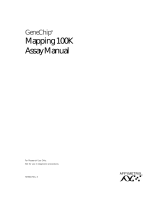 Thermo Fisher Scientific 100K Mapping Assay Owner's manual
Thermo Fisher Scientific 100K Mapping Assay Owner's manual
-
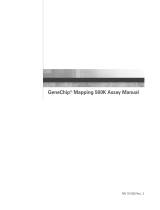 Thermo Fisher Scientific Mapping 500K Assay Owner's manual
Thermo Fisher Scientific Mapping 500K Assay Owner's manual
-
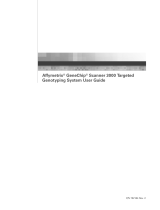 Thermo Fisher Scientific Targeted Genotyping System User guide
Thermo Fisher Scientific Targeted Genotyping System User guide
-
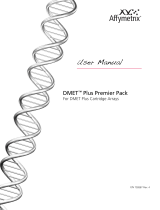 Thermo Fisher Scientific DMET™ Plus Premier Pack User manual
Thermo Fisher Scientific DMET™ Plus Premier Pack User manual
-
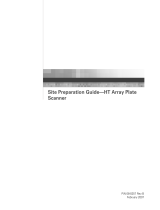 Thermo Fisher Scientific Array Plate Scanner Site Preparation Owner's manual
Thermo Fisher Scientific Array Plate Scanner Site Preparation Owner's manual
-
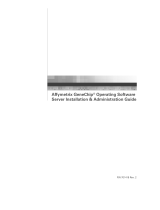 Thermo Fisher Scientific GeneChip® Owner's manual
Thermo Fisher Scientific GeneChip® Owner's manual
-
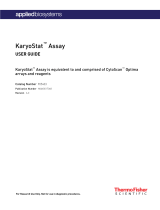 Thermo Fisher Scientific KaryoStat™ Assay User guide
Thermo Fisher Scientific KaryoStat™ Assay User guide
-
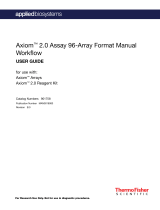 Thermo Fisher Scientific Axiom 2.0 User manual
Thermo Fisher Scientific Axiom 2.0 User manual
-
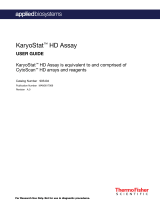 Thermo Fisher Scientific KaryoStat™ HD Assay User guide
Thermo Fisher Scientific KaryoStat™ HD Assay User guide
-
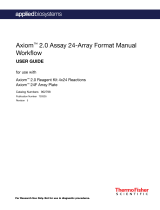 Thermo Fisher Scientific Axiom 2.0 Assay 24-Array Format User guide
Thermo Fisher Scientific Axiom 2.0 Assay 24-Array Format User guide










































































































































































